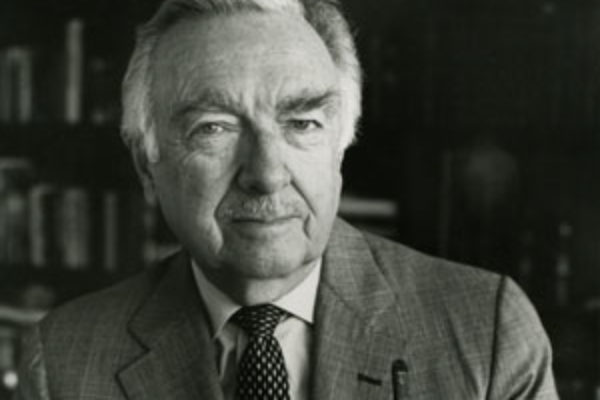After a long day of work or school in the 1960s, Americans might have gathered in front of their TVs to catch up on the day’s events.

For 30 minutes each weeknight, with no Twitter or Facebook newsfeeds to distract them, they would watch Walter Cronkite, who anchored “The CBS Evening News.” Instead of using a dizzying sequence of b-roll footage, pundits or scrolling news tickers, the program simply relied on Cronkite’s accurate, balanced reporting.
From 1962 to 1981, Cronkite covered many of the pivotal events of the 20th century including the assassination of John F. Kennedy, the Vietnam War, the first moon landing and Watergate and eventually became known as “the most trusted man in America.”
But before Cronkite earned this title, he studied at The University of Texas at Austin.
Cronkite at The University of Texas at Austin
In 1933, in the midst of the Great Depression, Cronkite was one of 6,652 students to enroll at The University of Texas at Austin. He studied political science, economics and journalism. He also wrote for The Daily Texan and served as an afternoon sports reporter at KNOW-AM, the campus radio station.
Soon thereafter, when William Randolph Hearst’s International News Service opened a bureau at the Texas Capitol, Cronkite obtained a part-time administrative position that he referred to as “one of the best breaks of my life.”

From there, he went on to work as a reporter at the Houston Press and as a war correspondent with United Press International during World War II.
In his nearly 20 years at “The CBS Evening News,” he helped to establish the role of anchorman in journalism and also served as the managing editor for the program. However, he would continue to return to The University of Texas at Austin.
In 1988 Cronkite donated his personal and professional papers to the university’s Dolph Briscoe Center for American History.
The Cronkite Papers cover virtually every aspect of the respected journalist’s life but focus on his career with CBS News, including research files, audio and video recordings, personal correspondence, production materials and photographs.
That same year he also taught in the College of Communication as part of the Senior Fellows honors program, lecturing on ethics in journalism and sharing lessons from his storied career.

Roderick P. Hart, former dean of the College of Communication and founder of the Senior Fellows program, organized Cronkite’s lectures at the university and taught alongside him.
“As one of the college’s most accomplished sons, Walter Cronkite epitomized the traditional values of journalism —accuracy, courage, independence and integrity — that we seek to imbue in our students,” Hart says. “By honoring the Cronkite legacy, we hope to instill in our students the moral and ethical framework they will need to help them navigate a new digital era.”
Honoring Cronkite’s Legacy at UT
In 2012, as part of the Walter Cronkite Plaza dedication, the university’s public art program, Landmarks, unveiled an art installation by Ben Rubin titled “And That’s The Way It Is.”
“And That’s The Way It Is” honors the Cronkite legacy by drawing from archival transcripts of his broadcasts as well as live network news. As daily news is generated, the text adapts to reflect current events connecting the past and present.
Named after Cronkite’s trademark nightly signoff from “The CBS Evening News,” “And That’s The Way It Is” was designed to illuminate the face of the Communication A (CMA) building with projections of choreographed text. It is normally visible every evening from dusk until midnight from the Walter Cronkite Plaza. Currently, the art installation is not operating while it awaits new projectors.
Post update from previous article written by Laura Byerley




